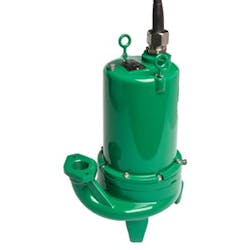In addition to office space and efficient creation of new products, one of the factors a manufacturer has to consider when constructing a new plant is disposal of industrial sewage and waste. If constructed properly, a disposal system can easily handle these materials. However, if the wrong system is put in place, these materials can also clog grinders and pipes, leading to downtime and unnecessary expense.
The Problem
A manufacturer with more than 3,000 employees working at plants in Asia, India, China, the Czech Republic, North America and Brazil recently constructed a new plant in the United States. The plant represented the company’s second large investment in North America.
Halfway through the site and utility design, the engineering firm hired to design the plant realized it would not be able to gravity flow sewage to the existing mains as a way of discharging the sewage from the new plant site. To address the problem, two duplex grinder stations were put into place at the plant. Both were 4-ft-by-11-ft tanks using standard 2-hp commercial grinders with radial cutters on a standardized 1.25-in. discharge rail system. One station was placed near the rear of the facility, and the other was placed near the front.
After completion of construction and the initial startup of both grinder stations, plant management began to notice that the water tanks were filling with material other than the expected sewage. Mop strings, rubber gloves and shop rags were finding their way into the system, binding and clogging the stationary and rotating cutting assemblies. Although the standard grinder that was in place was designed to grind and discharge the materials that were collecting, it was the volume of these materials that was clogging the pumps and costing maintenance crews time and effort to clear the system.
Despite communication to staff to monitor the debris placed into the stream, the clogging problem persisted for a period of two years.
The Solution
In 2014, the manufacturer was introduced to Pentair’s Myers V2 grinder pump with a patent-pending axial cutter technology. The new cutter was designed to grind even the most challenging material to a fine slurry and allow it to discharge out of the facility. Pentair presented the product to the manufacturer and discussed the benefits of the V2 with the plant operations manager, suggesting the replacement of the existing pumps with the V2 grinder.
Convenience was another factor that was highlighted during the discussions. Pentair sales engineers explained that the V2installs to the rail system used by the standard grinder that was in place, so the change would be as simple as pulling the existing pump out and replacing it. System downtime would be minimized.
In January 2015, the manufacturer agreed to the change, and existing system pumps were replaced with the Myers V2 grinder pumps.
The Results
Since their installation, the V2 grinder pumps have been meeting and exceeding the manufacturer’s expectations, performing in a very complicated work environment. It is an example of how Myers engineers pumps that not only do what is expected, but also can accomplish whatever is possible in today’s complicated sewage environment.
